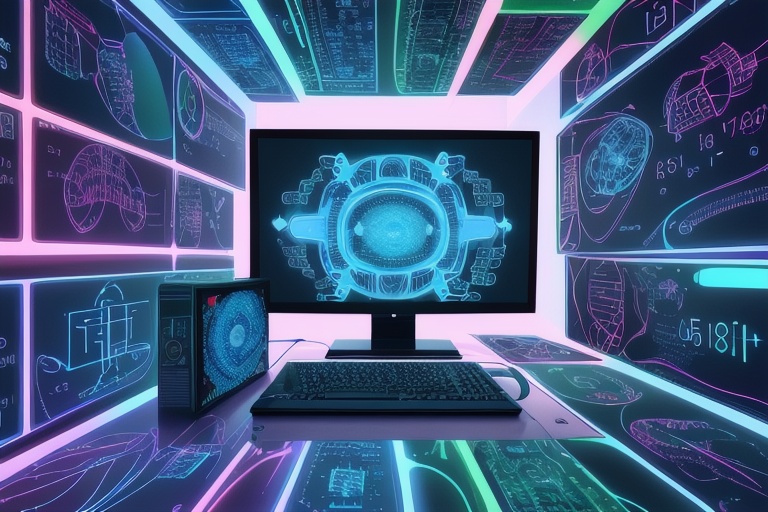The rise of artificial intelligence (AI) has significantly impacted various sectors of society, bringing about innovative solutions that were once deemed the realm of science fiction. One such remarkable integration of technology is evident in the realm of art, where AI art generators have emerged as a groundbreaking tool that has democratized the creative process. By simplifying the convergence of technology and artistic expression, these AI systems have enabled individuals to compose stunning works of art, even without prior artistic training. Such advancements have not only expanded the horizons for the creatively inclined but also sparked important discussions around the future of art in the AI age.
The rise of artificial intelligence (AI) has significantly impacted various sectors of society, bringing about innovative solutions that were once deemed the realm of science fiction. One such remarkable integration of technology is evident in the realm of art, where AI art generators have emerged as a groundbreaking tool that has democratized the creative process. By simplifying the convergence of technology and artistic expression, these AI systems have enabled individuals to compose stunning works of art, even without prior artistic training. Such advancements have not only expanded the horizons for the creatively inclined but also sparked important discussions around the future of art in the AI age.
Harnessing AI for Artistic Creation
AI art generators harness the power of machine learning and neural networks to produce unique visual art pieces. These systems can be categorized mainly into two genres: text-to-image and image-to-image conversion tools. Both of these genres employ sophisticated algorithms designed to interpret input and transform it into artistic expressions.
The text-to-image generators function by translating the user's written description, known as a prompt, into a pictorial representation. Trained on massive, diverse datasets, these AI tools learn to correlate descriptions with visual data. Through this process, they become adept at generating images that closely align with the provided text prompts. Meanwhile, image-to-image generators transcend traditional editing boundaries by allowing users to reform existing visuals. By utilizing approaches like neural style transfer, they can fuse elements from multiple images, culminating in intriguing and often visually arresting artworks.
Data: The Artist's New Palette
The foundation of AI art generators is deeply rooted in data. Text-to-image tools require extensive databases of images annotated with descriptive text to accurately parse and produce visuals. This data enables the algorithm to distinguish nuances and intricacies within the imagery, refining its ability to mirror the specificities of the prompt. Image-to-image generators, conversely, rely on neural networks that can adeptly merge foundational images with chosen artistic styles, creating interpretations that can range from subtly altered to entirely reimagined artworks.
The exciting aspect of leveraging AI in art creation lies in its unpredictability. Algorithms trained for specific outcomes can surprise users and developers alike with unforeseen interpretations, owing to the variant nature of the AI systems employed by art generators. This unpredictability, combined with widespread access to these technologies, fuels continuous innovation and experimentation within the field.
Top AI Art Generators Redefining the Artistic Landscape
Let's take a closer look at some of the leading AI art generators that are redefining boundaries and bringing a new dimension to creative exploration:
DALL-E 2 - Developed by OpenAI, this platform allows users to transform written descriptions into visuals. It employs a diffusion process that translates random dot patterns into cohesive images, resonating with the elements mentioned in the text.
Midjourney - Recognized for its striking, realistic compositions, Midjourney has surged in popularity, even triumphing in an art competition. With its high-resolution output, it demonstrates the capabilities of text-to-image AI at a remarkably advanced level, though access currently requires joining a waiting list.
Lensa - This application stands out for its personalization features. Users can input selfies and receive artistically reimagined versions based on the platform's algorithms. Lensa further offers a suite of editing tools to refine and customize the final product.
Jasper - While appearing similar to other AI art generators, Jasper distinguishes itself with outputs characterized by exceptional realism and aesthetic appeal. Like Midjourney, access to Jasper is invitation-only, directed through its Discord community.
Implications and the Future of AI-Generated Art
As these AI art generators continue to expand their reach, they ignite conversations about the essence of art and the role of AI in the creative process. While concerns about diluting the value of traditional techniques exist, there's an apparent avenue for AI-generated art to serve as a springboard for inspiration and collaboration, rather than as a replacement for human-created art.
AI art generators are notably breaking new ground in both the creation and appreciation of art, offering boundless possibilities for creators of all levels and altering existing barriers within the art community. With ongoing advancements, the future of AI in art promises an even more extensive array of innovative capabilities.
The excitement surrounding AI art generators signals the beginning of a transformative chapter in the art world—one where technology invigorates creative expression and expands the scope of what can be imagined and achieved. Whether you're a seasoned artist, a creative enthusiast, or someone who simply appreciates the wonder of art, the emergence of AI-generated art is an invitation to venture into a world of discovery and inspiration.
Information for this article was gathered from the following source.




